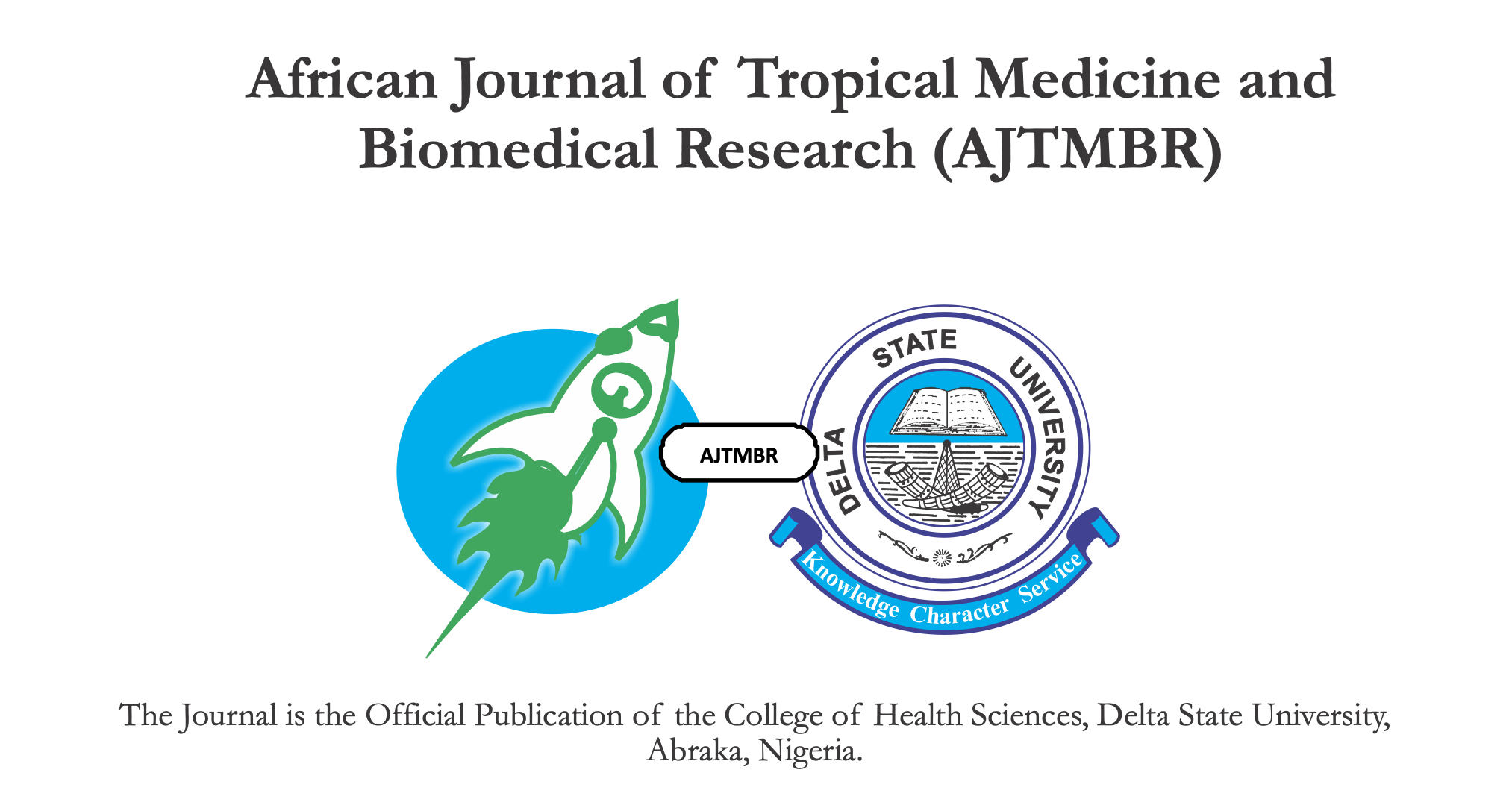Familial Tuberous Sclerosis Complex:
Tuberous Sclerosis Complex an a Patient Presenting in Status Epilepticus
Keywords:
tuberous sclerosis complex, status epilepticus, epilepsyAbstract
Tuberous sclerosis complex is a rare multi-systemic disorder that could be complicated by disabling neurological manifestations including intractable epilepsy. It is an autosomal dominant disorder with variable penetrance. Familial tuberous sclerosis probably occurs more often than is reported in the literature. This article reports on a Nigerian man with tuberous sclerosis complex who presented in status epilepticus with documentation of tuberous sclerosis in his family and discussed the manifestations, diagnostic criteria, clinical evaluation, investigation and management of patients with tuberous sclerosis complex.
References
"Tuberous Sclerosis Fact Sheet," NINDS. NIH Publication No. 07-1846 .http://www.ninds.nih.gov .
Walter GB,Robert BD,Gerald MF , Joseph J. Neurocutaneous syndromes. In: Pocket Companion to Neurology in Clinical Practice. Walter GB,Robert BD,Gerald th MF & Joseph J (eds). 4 edition .Elsevier Inc Philadelphia 2004. 455-458
Crino PB, Nathanson KL , Henske EP. The Tuberous sclerosis complex : N Engl J Med 2006;355:1345-56.
European Chromosome 16 Tuberous Sclerosis Consortium. Identification and characterization of the tuberous sclerosis gene on chromosome 16. Ce ll 1993;75:1305-15.
Huang J, Manning BD. The TSC1–TSC2 complex: a molecular switchboard controlling cell growth. Biochem J 2008; 412:179–190.
Jones AC, Shyamsundar MM, Thomas MW, et al. Comprehensive mutation analysis of TSC1 and TSC2 and phenotypic correlations in 150 families with tuberous sclerosis. Am J Hum Genet 1999;64:1305-15.
Curatolo P, Seri S, Verdecchia M, Bombardieri R. Infantile spasms in tuberous sclerosis complex. Brain Dev 2001;23: 502-7.
Prather P, de Vries PJ. Behavioral and cognitive aspects of tuberous sclerosis complex. J Child Neurol 2004;19:666-74.
Joinson C, O'Callaghan FJ, Osborne JP, Martyn C, Harris T, Bolton PF. Learning d is a b ilit y and e p il e p s y in an epidemiological sample of individuals with tuberous sclerosis complex. Psychol Med 2003;33:335-44.
Jansen FE, Vincken KL, Algra A, et al. Cognitive impairment in tuberous sclerosis complex is a multifactorial condition. Neurology 2008; 70:916–923.
Goodman M, Lamm SH, Engel A, et al. Cortical tuber count: a biomarker indicating neurologic severity of tuberous sclerosis complex. J Child Neurol 1997; 12:85–90.
Jambaque I, Cusmai R, Curatolo P, et al. Neuropsychological aspects of tuberous sclerosis in relation to epilepsy and MRI findings. Dev Med Child Neurol 1991; 33:698–705.
Thiele EA. Managing epilepsy in tuberous sclerosis complex. J Child Neurol 2004;19:680-6.
Luat AF, Makki M, Chugani HT. Neuroimaging in tuberous sclerosis complex. Curr Opin Neurol 2007; 20:142–150.
Olumide Y.M . Acne Vulgaris (Pimples). In: A Pictorial Self-instructional Manual on Common Skin Diseases (where there is st no Dermatologist). Olumide Y.M. 1 edition Heinemann Educational Books (Nigeria) Plc Ibadan. 1993. 78-84.
Ewalt DH, Sheffield E, Sparagana SP, Delgado MR, Roach ES. Renal lesion growth in children with tuberous sclerosis complex. J Urol 1998;160:141-5.
Ewalt DH, Diamond N, Rees C, et al. Long-term outcome of transcatheter embolization of renal angiomyolipomas due to tuberous sclerosis complex. J Urol 2005; 174:1764-6.
Kothary N, Soulen MC, Clark TW, et al. Renal angiomyolipoma: long-term results after arterial embolization. J Vasc Interv Radiol 2005;16:45-50.
O'Callaghan FJ, Noakes MJ, Martyn CN, Osborne JP. An epidemiological study of renal pathology in tuberous sclerosis complex. BJU Int 2004;94:853-7.
Ryu JH, Moss J, Beck GJ, et al. The NHLBI lymphangioleiomyomatosis registry: characteristics of 230 patients at enrollment.Am J Respir Crit Care Med 2006;173:105-11.
Bader RS, Chitayat D, Kelly E, et al. Fetal rhabdomyoma: prenatal diagnosis, clinical outcome, and incidence of associated tuberous sclerosis complex. J Pediatr 2003;143:620-4.
Smythe JF, Dyck JD Smallhorn JF, Freedom RM. Natural history of cardiac rhabdomyoma in infancy and childhood. Am J Cardiol 1990;66:1247-9.
Roach ES, Gomez MR, Northrup H. Tuberous sclerosis complex consensus conference: revised clinical diagnostic criteria. J Child Neurol 1998;13:624-8.
Franz DN, Leonard J, Tudor C, et al. Rapamycin causes regression of astrocytomas in tuberous sclerosis complex. Ann Neurol 2006;59:490-8.
Hyman MH, Whittemore VH. National Institutes of Health consensus conference: tuberous sclerosis complex. Arch Neurol 2000;57:662-5.

Downloads
Published
Issue
Section
License

This work is licensed under a Creative Commons Attribution-NoDerivatives 4.0 International License.
Key Terms:
- Attribution: You must give appropriate credit to the original creator.
- NonCommercial: You may not use the material for commercial purposes.
- ShareAlike: If you remix, transform, or build upon the material, you must distribute your contributions under the same license as the original.
- No additional restrictions: You may not apply legal terms or technological measures that legally restrict others from doing anything the license permits.
For full details, please review the Complete License Terms.



